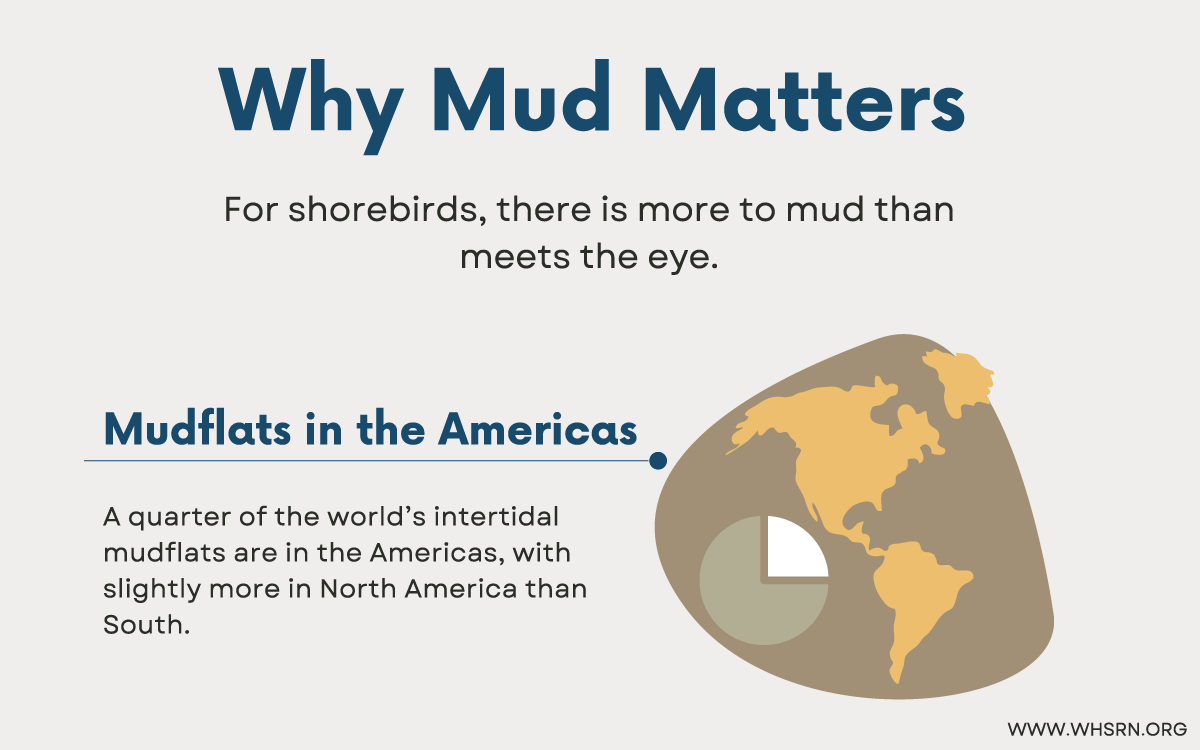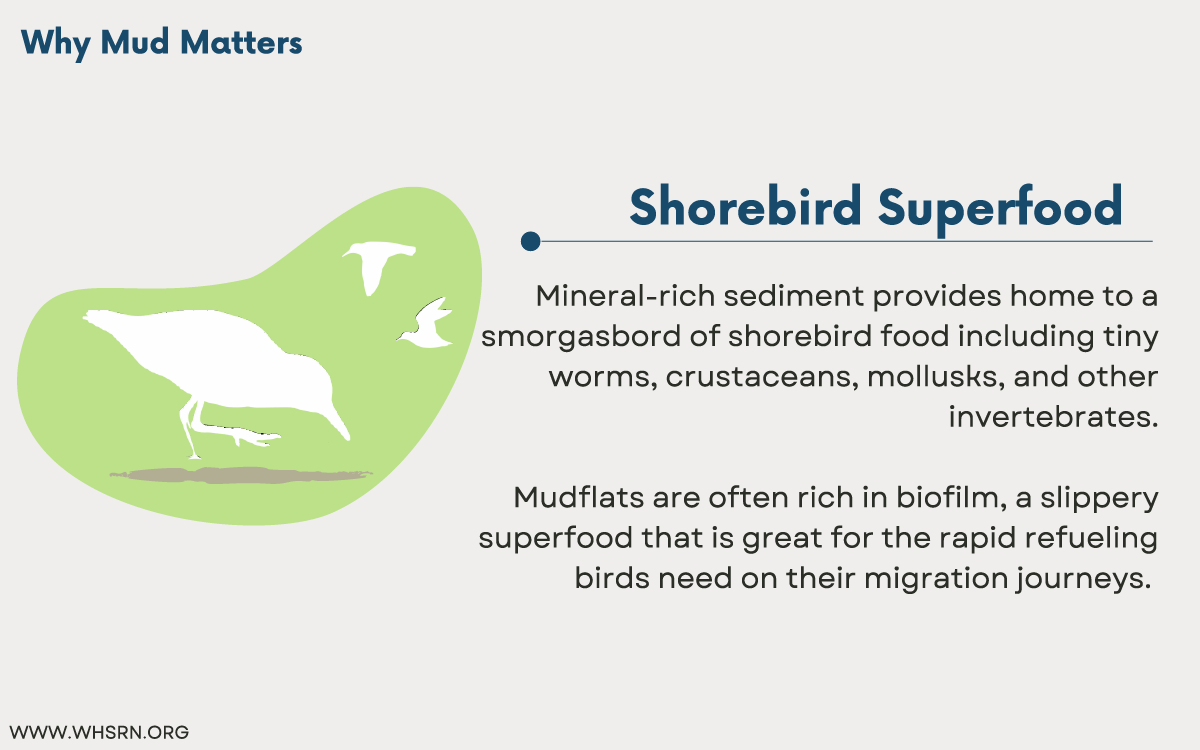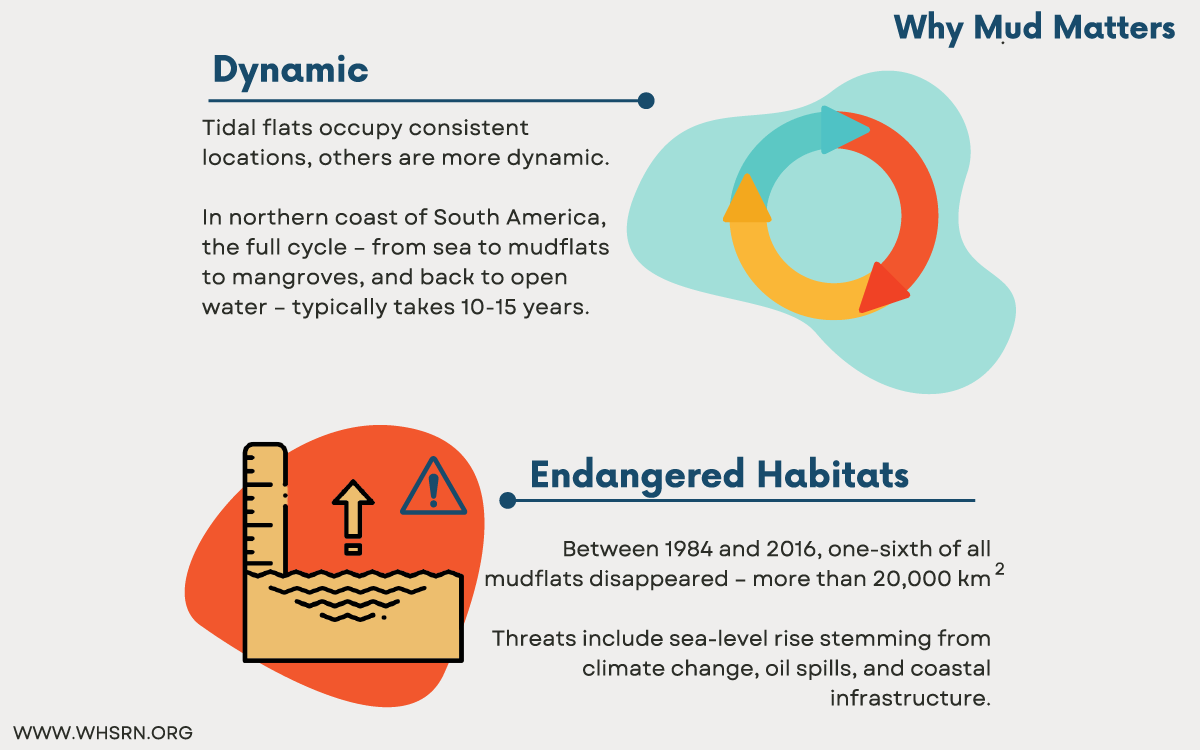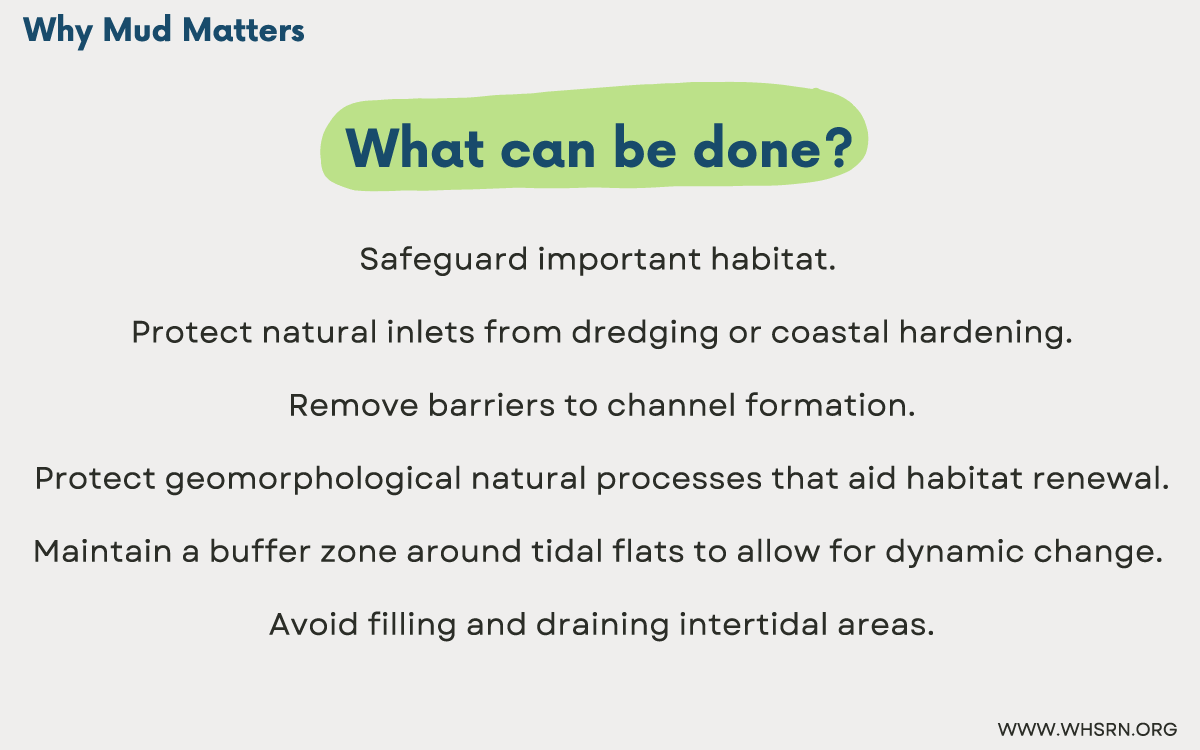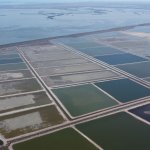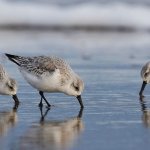Throughout the Americas, shorebird research and conservation reveal that there’s more to mud – well, intertidal mudflats – than meets the eye.
By James Lowen
Cautiously, I venture one boot forth onto the slick, sheeny, grey-brown expanse of intertidal mudflat. Or rather, into it. Despite only the lightest pressure, my foot sinks through the cloying substrate. Breaking the surface reveals underlying black, sticky muck that adheres to my leg – and a distinctively pungent, sulphuric stench that makes me gag. But to a migratory shorebird, whether on the marine mud of Argentina’s Bahía Blanca or Canada’s Fraser River Estuary, this is the smell of success.
At high tide, intertidal mudflats are invisible, covered by the sea. But once the tide retreats, the unvegetated ground is exposed. Although little oxygen penetrates the sediment, it is full of hidden life adapted to thrive in the remarkable daily extremes of being alternately submerged in sea water then exposed to the air. Innumerable bacteria and decomposing organic matter generate the characteristic smell of rotten eggs, while algae congregate on the surface and the interior harbours mollusks, crustaceans, worms and much more besides. It is these clandestine life, coupled with twice-daily saturation that softens silty sediment sufficiently for shorebirds to probe, that renders mudflats mighty feeding stations for millions of shorebirds worldwide.
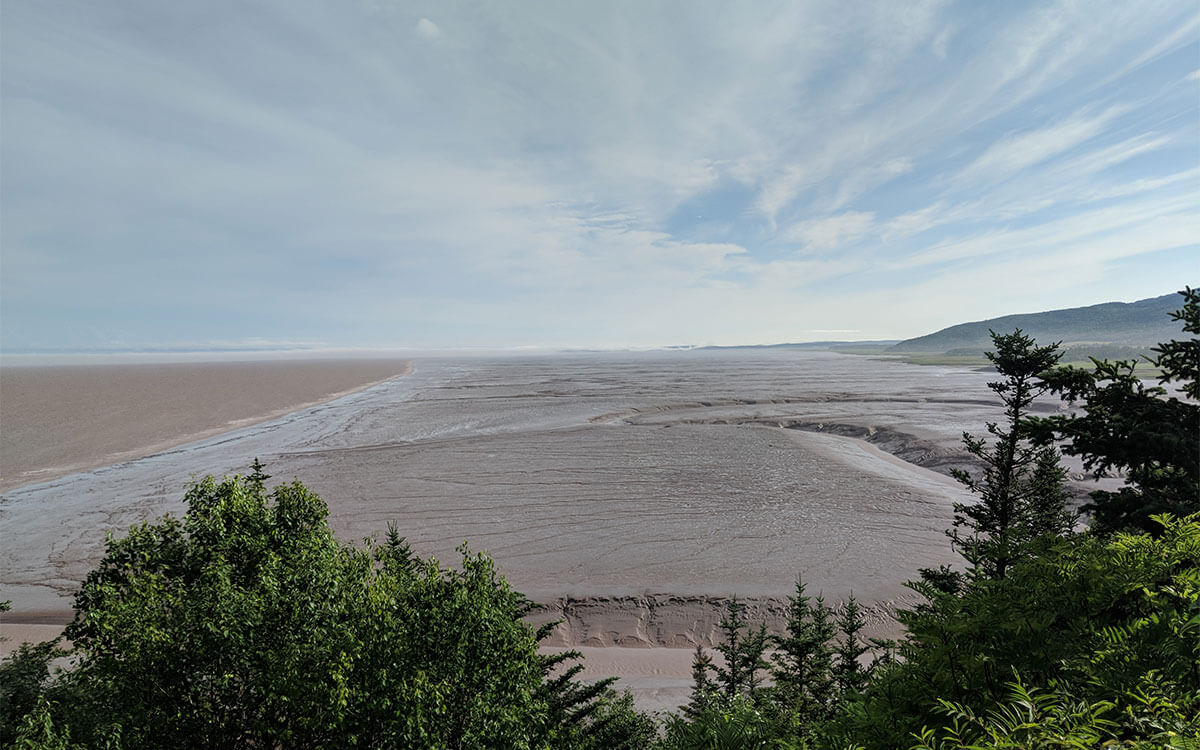
Exposed intertidal flat at WHSRN site Bay of Fundy, Canada. Photo: Laura Chamberlin.
If you have never visited a shorebird-strewn mudflat, you are missing out on a spectacle like no other in the world of birds. At low tide, thousands upon thousands of shorebirds are racing against time – scurrying, wading, or loping across the immense muddy slick before the tide comes in and the feast within becomes waterlogged until it recedes. The returning sea water pushes the shorebirds off feeding grounds to fly in masse low above the flats – giant, billowing, shimmering clouds of feather, trilling and quipping in constant communication – until they locate land high enough to wait out the tidal peak.
In calm, coastal environments – particularly estuaries or bays – sediment builds up as wave energy reduces. Over time, this matter typically forms mudflats between the low- and high-water marks, particularly where gently sloping coastlines coincide with large tidal ranges and significant inflows of sediment. Transported by seas and rivers, the muddy substrate usually consists mainly of fine particles – clays, silts, and sands – the composite morass mixed cohesively with water.
“The best mudflats for shorebirds,” Arne Lesterhuis, WHSRN Shorebird Monitoring and Conservation Specialist, explains, “are often around estuaries, because those areas are softer and thus easier to probe, as well as richer in invertebrates as a result of rivers bringing in mineral-rich sediment and other nutritional matter”. Even so, this is not a ‘one-size-fits-all’ habitat. Mudflats may look uniform to our untutored eyes, but to a hungry bird there are good spots and bad. Silty sediments hold water for longer than more porous substrates, resulting in pooling water that can be probed by shorebirds for longer as tides retreat and accessible invertebrates remain active near the surface. Coarse sediment, such as gravel and shell fragments, interfere with prey detection and capture because they are harder for shorebirds to investigate.
Some tidal flats occupy consistent locations, while others are naturally dynamic. Wave action and sea currents push mudflats in the Guianas one to two kilometers westward each year, according to ornithologist Arie L. Spaans. “They are constantly changing,” agrees Oliver Claessens, an ornithologist in French Guiana, “The full cycle – from sea to mudflats then mangroves, before returning to open water – typically takes 10–15 years.” Coastal morphology also creates variety; mudflats are not the exclusively two-dimensional landscape that their name implies. Look closely and you notice pools alternating with hummocks, channels weaving between mounds, and a narrow strip around the mean high-tide level where the mud is firmer and streamlets few. In northern South America, there is also a band around the low-water mark known as ‘sling mud,’ which has a gel-like texture. “More water than mud,” says ornithologist Otte H. Ottema, which can be rich in shrimp-like tanaids. Such zoning creates microhabitats that shorebirds exploit in different ways, enabling 20 or more species to use a single mudflat simultaneously.
But there is even more to mudflats than meets the eye.
In the past two decades, ornithologists have deciphered mudflats’ most vital secret: biofilm. A shimmering, slimy substance varnishing certain mudflats, biofilm comprises bacteria and single-celled algae called diatoms that can photosynthesize, thereby generating high-energy carbohydrates and long-chained fatty acids. Although long recognised as an important foodstuff for zooplankton and the odd specialised fish, it was unknown in terrestrial vertebrate diets until discovered in the stomach of Western Sandpipers (Calidris mauri) feeding at Roberts Bank in Canada’s Fraser River Estuary – their final stopover before a 621.37 miles (1,000 kilometer) flight to their Arctic breeding grounds.
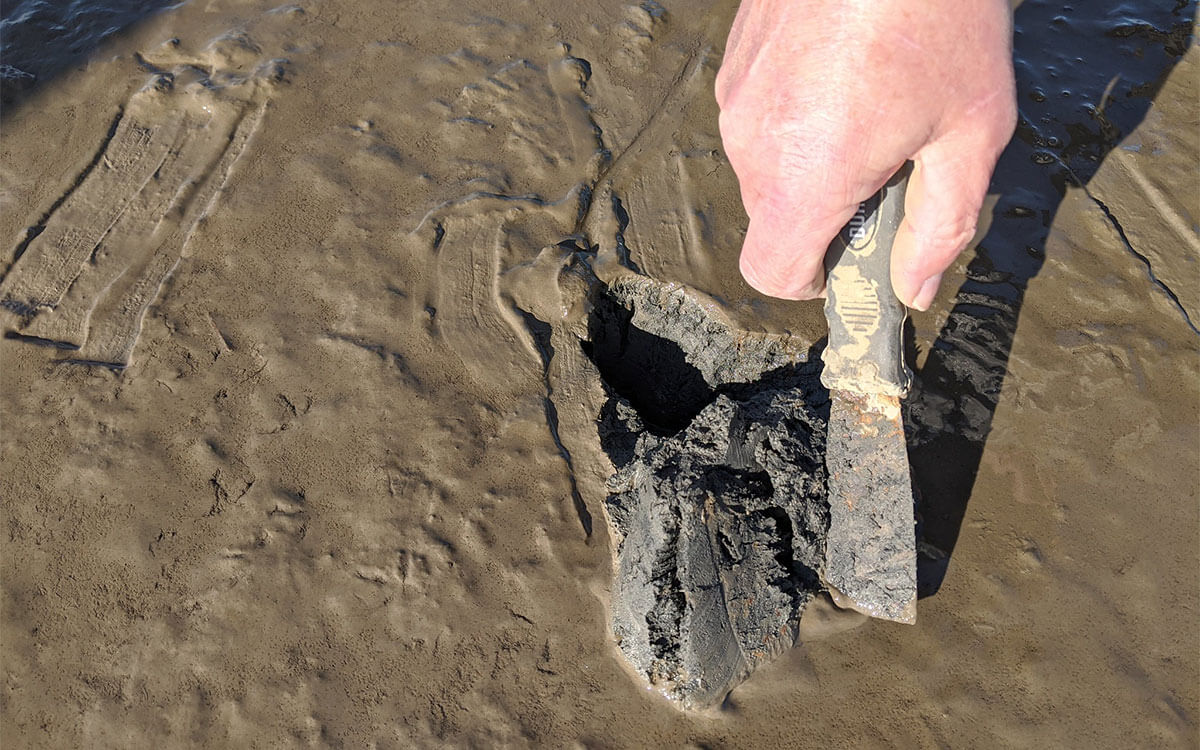
Biofilm at Robert Banks, Fraser River Estuary (Canada). Photo: Laura Chamberlin.
The discovery explained why vast congregations of this peep form here at the same time every spring. The birds were targeting the perfect superfood: one that is quickly found, predictable in location and time, easily harvested, efficiently stored, and rapidly metabolised. For rapid refueling against spring’s ticking clock, biofilm proves perfect for powering urgent, migratory flight – and is now reckoned to provide half of a sandpiper’s daily energy needs.
Shorebird gatherings at some Western Hemisphere Shorebird Reserve Network (WHSRN) sites are truly immense. Loaded with mudshrimp, mudworms, and snails, Canada’s Bay of Fundy mudflats serve as a vital stopover point for two million Semipalmated Sandpiper (C. pusilla) – over 30% of the eastern biogeographical population. In an average 20-day autumn stay, the peep will double its weight, the resulting fat reserves powering it through what Manomet research has revealed to be a 1864.11 miles (3,000-kilometer) nonstop flight to wintering grounds in northern South America.
In the Bay of Panama, 1.3 million migratory shorebirds have been counted and a similar number of shorebirds use Suriname’s coast, particularly during southbound migration. Indeed, Suriname is thought to host more than half of South America’s coastal shorebirds, compressed into just 1.5% of the continent’s coastline. “Suriname’s coasts have teemed with North American-breeding shorebirds since time immemorial,” says Spaans.
Many other important mudflats pockmark Western Hemisphere coastlines of the Americas – each one a vital link on the migration chain. Overall, the Americas harbour a quarter of the world’s intertidal mudflats, with slightly more in North America than South. Half of all tidal flats occur in just eight countries, of which three (U.S., Canada, and Brazil) are in the Americas. Little wonder that mudflats are a primary focus of conservation efforts within WHSRN.
Intertidal mudflats are quietly becoming one of the world’s most endangered habitats. Between 1984 and 2016, one-sixth of all mudflats disappeared – more than 20,000 square kilometers. This is terrible news for migratory shorebirds needing sustenance. Imagine driving a car the length of the U.S. but repeatedly finding gas stations closed or offering limited fuel. If the tank runs dry, your journey is over – but you live on. For an exhausted Semipalmated Sandpiper migrating towards the Arctic, however, encountering a concrete wasteland where an estuary once sprawled spells doom.
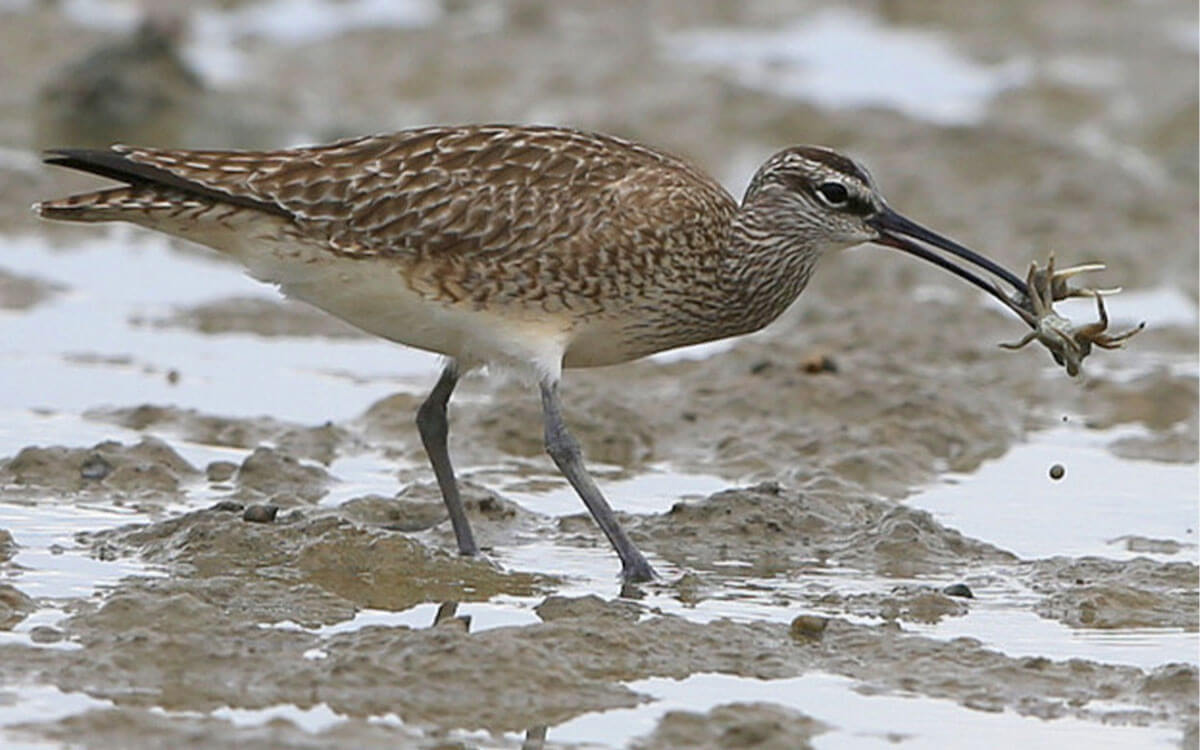
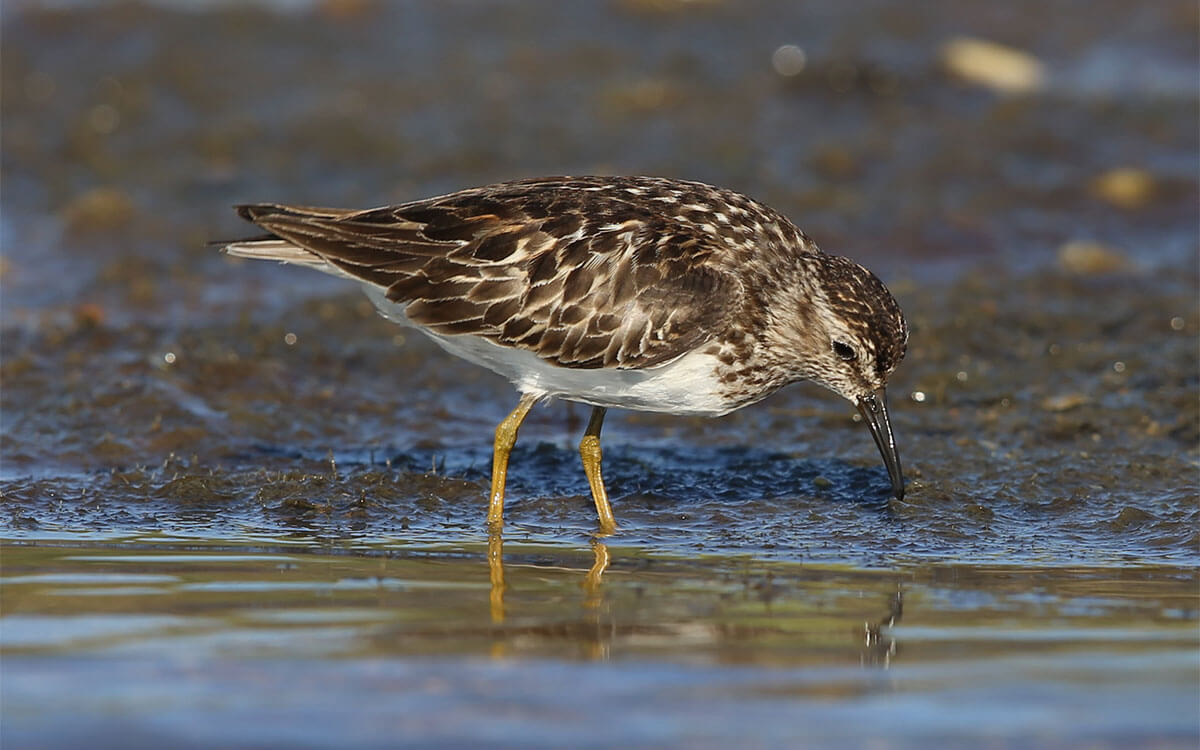
Several species rely on mudflats to refill energy for endure their long distance migration journeys. Left: Whimbrel (Numeius phaeopus) with a crab in California. Right: Least Sandpiper (Calidris minutilla). Photos: Brad Winn.
As a consequence, mudflat-loving shorebirds are hurting throughout the Americas. In North America, populations have plummeted by 70% since 1973. Tierra del Fuego’s Red Knot (C. canutus rufa) population dropped by 75% between 1985–2000. Semipalmated Sandpiper numbers are conservatively estimated to have reduced by nearly 30% in three generations (estimated at 22 years). In Suriname, according to monitoring by Otte H. Ottema, Semipalmated Sandpiper populationsdeclined by 90% in a decade, while Lesser Yellowlegs (Tringa flavipes) declined by 80% over the 2000s.
The haemorrhaging of mudflats – whether through destruction or degradation – is caused by human activity. Intertidal flats don’t look like much – an uninhabited featureless expanse that defies entry or engagement – and this effective invisibility is the very essence of their problem. Mudflats do not speak to people in the way that mountains do, or rainforests. Oozing and inaccessible, aesthetically constrained and seemingly endless, this habitat is often left unprotected and vulnerable to development.
Industrial and transport infrastructure, land reclamation, and real-estate construction destroy habitat. One-seventh of the continental U.S. coastline has already been ‘hardened’ by construction and may grow to one-third this century. Worse, Lesterhuis says, “coastal infrastructure is often located near high-quality foraging areas for shorebirds, such as river estuaries.”
The famous Roberts Bank mudflats are threatened by the proposed expansion of an offshore container terminal. Although construction would not destroy the mudflat directly, it could alter water salinity – precisely the quality that influences the diatom-infused biofilm, and thus northbound Western Sandpipers, to thrive there. Even Canada’s environment ministry has acknowledged that the consequences for shorebirds could be “potentially high in magnitude, permanent, irreversible, and continuous.”
“When it comes to an ecosystem rich in the right kind of biofilm,” Manomet’s Vice President of Flyways and Director of WHSRN, Rob Clay observes, “at present we simply don’t know enough to make an irreversible change.”
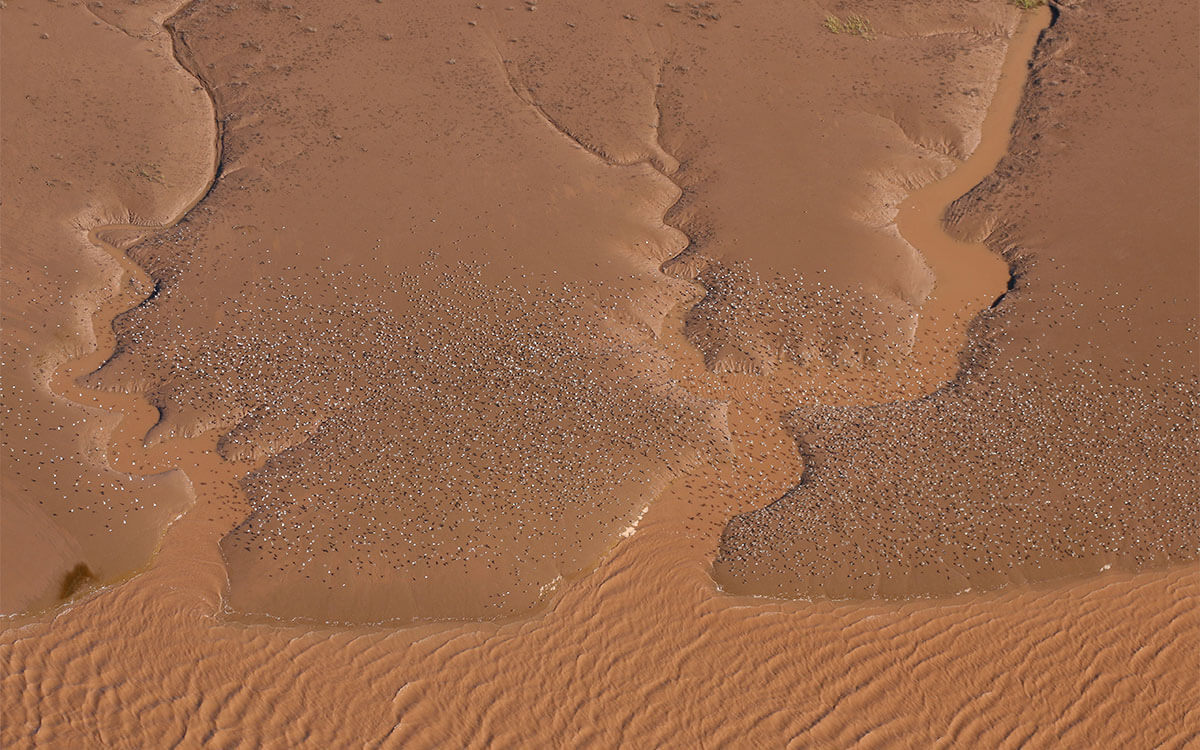
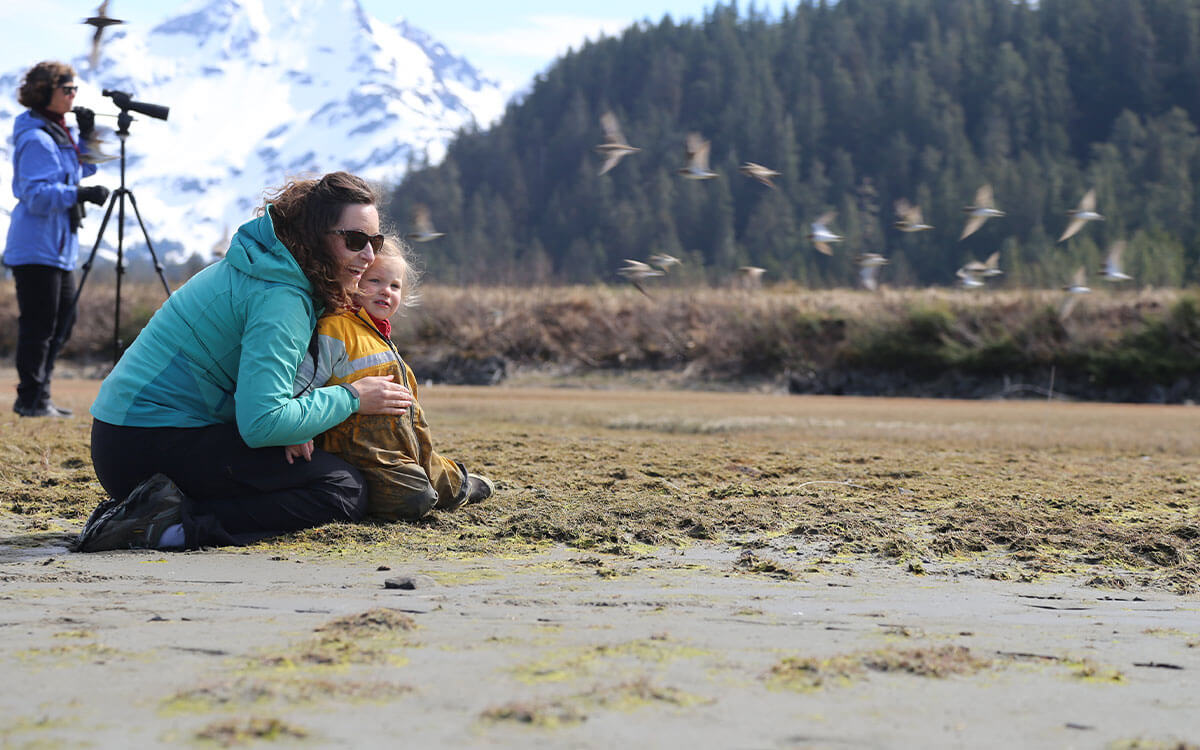
Left: Thousand of shorebirds at Bay of Fundy WHSRN Site, Canada. Photo: Julie Paquet. Right: Copper River delta WHSRN Site, USA. Photo: Erin Cooper.
The lengthy catalogue of pressures facing mudflats is discouraging. Dredging to improve access for vessels can interrupt sediment movement along the coast and decelerate accretion elsewhere, leading to mudflat erosion. Alternatively, as at Bahía Blanca, Argentina, dredged sediment may be dumped on top of tidal flats in order “to win land from the sea,” says Pablo Petracci, Universidad Nacional del Sur.
Then there’s the effect of sea-level rise stemming from climate change. Modelling the impact of 2°C warming over the next century, scientists projected that four out of five sample sites would lose 20–70% of their present intertidal habitat – a level of loss that would jeopardize the sites’ ability to support current shorebird numbers. (And that’s even before you’ve factored in impacts on biofilm or phenology of invertebrates.) The loss of productive mudflats spells the loss of whole flyways – and the species that use them.
What can be done?
In addition to safeguarding important habitat, management recommendations include: protecting natural inlets from dredging or coastal hardening; removing barriers to channel formation; protecting geomorphological natural processes that aid habitat renewal; maintaining a sizeable buffer zone around tidal flats to avoid their burial; and avoiding dumping sand (from dredging, for example) on top of intertidal sediment. And there is cause for optimism; U.S. coastal-management authorities are increasingly recognizing the benefits of maintaining the natural processes of sediment flow to benefit residential, commercial and biodiversity interests.
Manomet’s Shorebird Conservation Manual advises using holistic and informed decision-making and management techniques to generate positive outcomes from coastal engineering. From his experience at Bahía Blanca, Petracci would concur, explaining that “WHSRN is now part of the local governance, with decisions about dredging, channels, and the fishing industry taken jointly, where possible.”
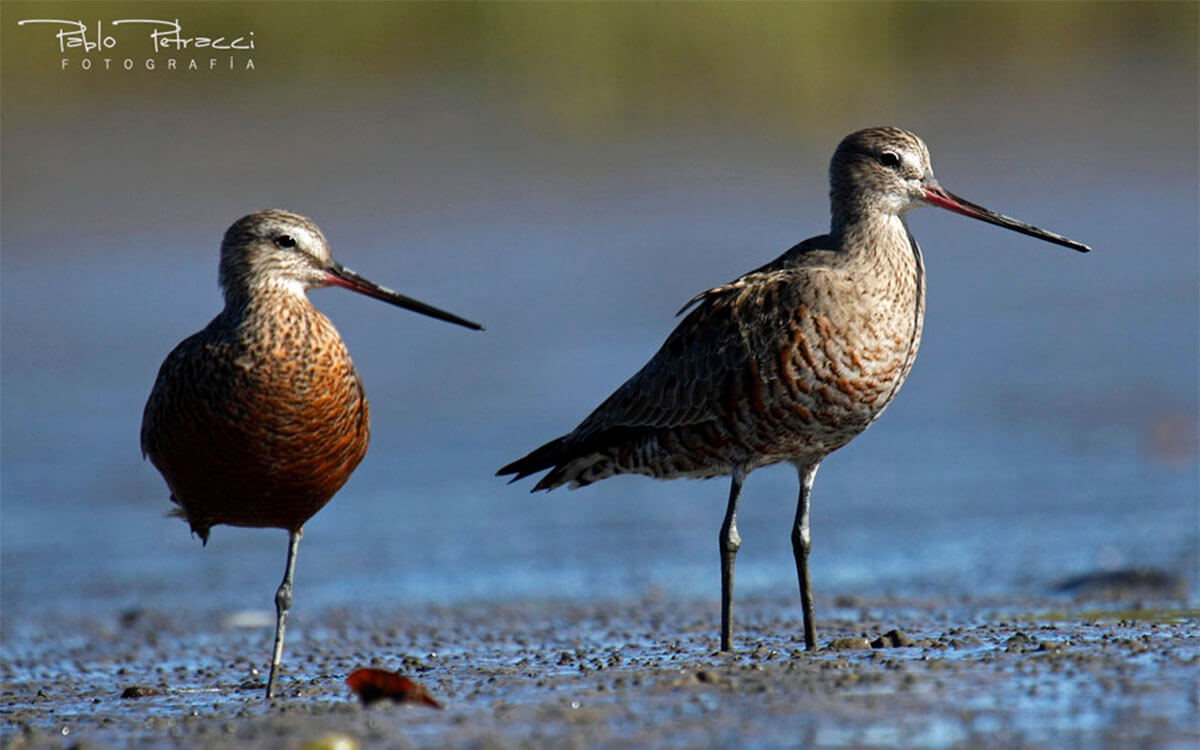
Hudsonian Godwit (Limosa haemastica) at Bahía Blanca WHSRN Site, Argentina. Photo: Pablo Pertacci.
Across WHSRN, organizations are identifying and implementing solutions that work locally. In Suriname, the challenge of ever-moving mudflats is addressed by safeguarding almost the entire coast, either as a nature reserve or multiple-use protected area. “Installing sediment-trapping structures and planting mangroves are successfully reverting erosion with the newly restored sediments attracting shorebirds,” says Lesterhuis. Counts here over the past year have reached welcome peaks of 38,023 Semipalmated Sandpiper, 2,978 Lesser Yellowlegs, and 1,750 Least Sandpiper.
WHSRN is also thinking ahead by working to ensure that shorebird conservation and mudflats are incorporated into the plans of governments and big companies. Unlike neighbouring French Guiana, where offshore-oil projects have been abandoned, Suriname plans to extract oil by 2025. Here, Lesterhuis says, “WHSRN hopes to become part of the conversation to avoid damage to mudflats used by millions of shorebirds.”
I think of Lesterhuis’ words – and the dedication shown by those involved with WHSRN throughout the Americas – as I scoop up a bucketful of mudflat gloop and gaze at a mini-universe of tiny worms, crustaceans and more. I have come to appreciate how the muddy smorgasbord represents good news for hungry shorebirds readying themselves for endurance-sapping migrations. That odour rising from my feet no longer seems sulphuric, but fragrant.
Cover Photo: Sanderling roost in southwest Saskatchewan. Photo: Brad Winn.




